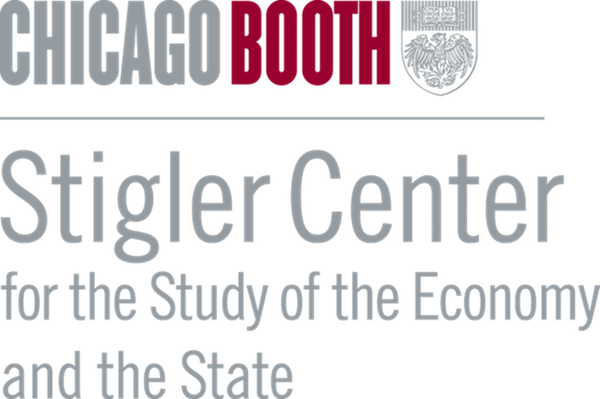Barak Richman writes that the recently announced investigation of the House Judiciary subcommittee for antitrust into the residency match antitrust exemption presents an opportunity to investigate broader failures in the physician market.
I appreciate any—and I mean any—attention that Congress pays to competition policy in the health sector. So, when the House Judiciary’s subcommittee on antitrust announced on March 17 that it is investigating the current “match” system that pairs graduating medical students with residencies, I cheered along. Yes, there are more pressing competition policy matters afoot (see, for example, President Donald Trump firing the two Democratic commissioners from the Federal Trade Commission) and more pressing health policy matters (see, generally, the activities of Secretary of Health and Human Services Robert F. Kennedy Jr.), but this investigation is valuable on its own merits. Perhaps more importantly, it also provides an opening for constructive policy to address the worsening conditions the physician market has experienced over the last decade and how regulation has contributed to this morass.
But first, the residency match program.
Revisiting competition for medical residencies
The National Resident Matching Program (NRMP) was established in 1952 to provide structure to the time-sensitive challenge of medical school graduates seeking residencies and hospitals trying to fill, but not overfill, their residencies. Each year, medical students in their final year apply to residencies and, if selected, go through an interview process with interested hospitals. After the interview process is finished, usually by February of each year, both students and hiring hospitals submit ranked preferences to a central database. In March, an algorithm then matches students with hospitals to maximize collective preferences.
The solution-by-coordination was designed to offer an orderly system that corrects informational asymmetries and time-inconsistency problems. It helps students find desirable programs, as opposed to being incentivized to accept the first hospital that offers them a position, as was the case before the program became institutionalized. On the other hand, it helps hospitals find the best candidates to fill vacancies. The same logic motivates coordinating fraternities and sororities during rush weeks.
Despite its purported justifications, the NRMP has also exhibited shortcomings. Most significantly, there is a wide gap every year between residency applications and positions offered (in 2025, for example, 52,498 medical students applied for 43,237 positions). Some criticism emerged in the 1990s alleging that the NRMP “favors hospitals over students,” and a Department of Justice investigation culminated in a 1996 consent decree in which residency programs agreed to curtail certain restrictions on recruitment practices. These criticisms prompted the NRMP to commission a study, featuring soon-to-be Nobel Laureate Alvin Roth, that proposed a revised algorithm that was implemented in 1997. Despite these reforms, a class-action lawsuit was filed in May 2002 alleging that the match system constituted an antitrust violation. The lawsuit’s gravamen was that the NRMP relies on sharing employment information between participating schools and teaching hospitals that caused hospitals to set residency wages below competitive prices, offer fewer residencies, and erect entry barriers for new programs.
After meeting some early success, the lawsuit was dismissed as moot after Congress passed legislation, championed by Senator Ted Kennedy and signed by President George W. Bush in 2004, that exempted the matching programs from the federal antitrust laws. The exemption has gone largely unquestioned since, and there has been little empirical study of how the exemption affects competition in the residency market.
After more than two decades of relative quiet, the NRMP and its antitrust immunity reentered public debate last month, when the House Antitrust Subcommittee requested information from several hospitals and associations, including from NRMP, to reassess the exemption. Antitrust Subcommittee Chair Scott Fitzgerald noted in committee submissions that in 2024, “about 20 percent of applicants—8,869 medical students who otherwise would become licensed doctors—failed to match with a residency position.”
Thus, there might be good reason to suspect that the 2004 antitrust exemption has enabled anticompetitive harm and deserves to be revisited. More importantly—and this is where I hope the Judiciary Committee will have an open mind once its attention starts focusing on the topic—there are enormously compelling reasons to examine the current competitiveness of the nation’s broader physician market. In fact, this is a critical time to do so.
As the U.S. physician market suffers, so do patients
The time is ripe because the profession has never before been what it is today. For more than a century, physicians in the United States enjoyed and demanded professional independence, and as recently as 2012, 60% of practices in the U.S. were physician-owned, with only 5.6% of physicians working as direct hospital employees. The last decade, however, has seen a surge in acquisitions of physician practices, with a pronounced uptick during the Covid-19 pandemic. Now, 52.1% of physicians are employed by hospitals or health systems, with an additional 21.8% employed by other corporate entities. Studies have found that this broad industrial consolidation of physicians under the control of hospital and other corporate systems has both reduced wages for physicians and caused systemic economic harm.
Given these seismic changes to the physician workforce, and given the undisputed benefits of exposing healthcare markets to sharper competitive forces, health policy experts and consumers alike should encourage the Judiciary Committee to consider the following policy opportunities:
Hospital dominance of physician markets: Widespread hospital employment of physicians has immediate competition implications. Plainly speaking, when powerful hospital systems dominate local hospital markets, they also dominate local physician markets. Some recent economic studies have established that hospitals with market power suppress the wages of healthcare providers. Such market power is exacerbated by the widespread use of non-compete agreements, despite their questionable legality.
Facilitating entry into markets for primary care: Changes and possibilities in the physician market open an additional host of challenges and opportunities for healthcare competition policy. The purported shortage of physicians, and especially the shortage of primary care physicians, should be examined through the lens of legal rules that serve as output restraints. State scope of practice rules limit how nurse practitioners could fill the primary care gap, and such rules deserve pointed skepticism given how successfully nurses have excelled as independent providers in the few New England and western states that offer them the chance. And if enabling nurse practitioners to operate as independent providers is a bridge too far, states (at the encouragement or demands of Congress) could liberalize rules concerning the strenuousness of the requirements of being supervised by medical doctors.
Liberalizing rules for digital care: The primary care shortage need not only be addressed by expanding the number of providers. The abundance of digital services, and their capacity to support healthcare personnel, can extend the reach of the providers we have. Perhaps the medical profession’s greatest failure—and the policy frontier in greatest need of regulatory attention—has been its inability to adjust to the digital age. The structure and financing of American medicine is largely unable to capitalize on technological ease and potential benefits of video appointments, digital healthcare tools, and healthcare analytics: compensation still relies on in-person visits and physical procedures, licensure is a state-based regime and limits cross-state telemedicine, and the legal determination of what constitutes a physician-patient relationship assumes a quaint 1900s paradigm, which makes physicians (but not insurers, marketers, and quacks) hesitant to offer healthcare guidance preemptively.
Encouraging modern medicine to capitalize on these digital capabilities requires more than just payment reform; it requires the development of new business and delivery models. Policymakers may be most effective by merely loosening the rules of legacy medicine and allowing innovators to enter markets and pioneer new patient-provider networks. Telehealth was originally thought to be one of the silver linings of the Covid-19 pandemic—a new technology that most thought was here to stay—but remarkably, traditional revenue-seeking mechanisms have squeezed out telehealth and reverted most delivery mechanisms to the technology of the 1900s.
Facilitating interstate competition: Among the most potent possibilities for greater competition is to expand the geographic scope for competitors. Imagine the Cleveland Clinic and Massachusetts General competing against each other for patients in rural America. The biggest barriers are state-constructed licensure laws that prohibit physicians in one state from providing care to patients in another. It is easier for physicians at Mass General to treat patients in Europe than in Maine.
Telehealth offerings are only the watershed for such interstate care. With interstate barriers gone, large health systems could collaborate with local facilities to provide expert rehabilitative care and specialized tertiary care for the chronically ill. There can be competition for rare and complex diseases without necessitating significant patient travel, Critically, increased competition would apply downward pressures on the market’s highest prices.
The Residency match and Congressional action
In sum, the Committee hearing takes place in a time when the physician market is in flux, when there are real opportunities to examine anticompetitive practices and regulations in physician markets, and real opportunities to facilitate meaningful competition in markets that are now insulated from price and quality pressures. There is much to discuss.
My hope is that the Judiciary Committee spends its limited time and resources addressing these larger issues. Chairman Fitzgerald’s skepticism of the NRMP antitrust immunity is consummately well-founded because skepticism of any antitrust immunity is well-founded. If the objective is to foster efficient markets, then by definition the appropriate policy tool is to subject market participants to the antitrust laws. Antitrust scrutiny examines the economic effects of particular restraints under particular market conditions. Legislative action is not similarly focused and measured; it is sweeping and unresponsive to economic change. I would congratulate the Committee if it led a charge to removing the antitrust exemption—which would not condemn the NRMP but only open it to antitrust scrutiny—and then directed its energies toward matters of greater import that require heavy thinking.
Author Disclosure: The author reports no conflicts of interest. You can read our disclosure policy here.
Articles represent the opinions of their writers, not necessarily those of the University of Chicago, the Booth School of Business, or its faculty.






